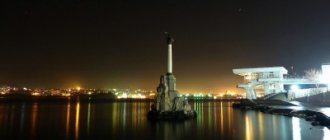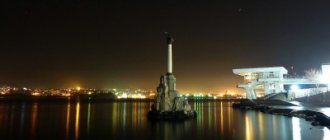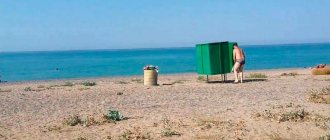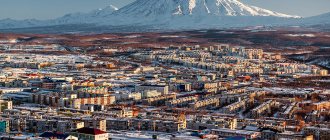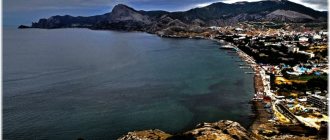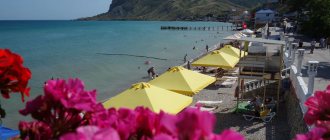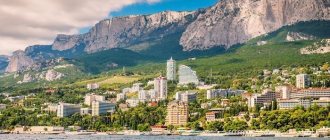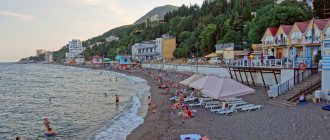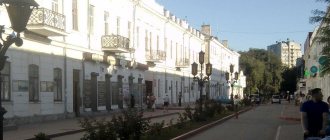Busy tourist routes bypass the Dzhankoy side located in Crimea. But people who have been here speak about the city with sincere sympathy and urge it to be a must-visit. In the article we will tell you what is remarkable about this town in central Crimea and why it is worth visiting.
Economic indicators
Agriculture has been well developed in Dzhankoy since historical times, providing high-quality products to the entire Crimean peninsula. In addition to agricultural activities, the city's economy is represented by several other sectors:
- grain farming;
- livestock farming;
- viticulture and winemaking.
Currently, Dzhankoy is an industrial city, 60 percent of the industry is occupied by manufacturing enterprises, the remaining percent is distributed between mining, chemical and food industries.
Entertainment
Water park "Dzhubga"
This water complex is one of the largest in the Krasnodar region, opened in 2009. There are 16 slides for adults, differing in height and number of turns; 12 slides for children, outdoor pools, showers and jacuzzi.
On the territory of the water park there are animal figures and statues. The most extreme slides are “Kamikaze”, “Big Hall”, “Tsunami”. The children's area is designed in the form of a playground called “Jungle”.
One of the pools has a rock climbing slide, and another popular activity is simulated surfing. There is a cafe on site that sells full meals and fast food.
Dolphinarium
The Dolphinarium introduces the life of marine mammals, offers visitors shows, photos and swimming with dolphins and fur seals, and a sea lion.
A popular service is dolphin therapy, intended for psychocorrection and effective social adaptation of children and adults. The Dolphinarium offers both individual and family therapy.
Jurassic Park
An educational and entertainment center consisting of interactive attractions - moving exhibits in the form of dinosaurs that not only change position, but also make sounds.
The concept of the building is taken from the S. Spielberg film of the same name. Throughout the area there are artificial plants, lakes and rocks representing the Mesozoic era.
You need to move through the park along paths passing through caves and labyrinths.
There is a suspension bridge under which Albertosaurus roars at visitors, and Rex, the most dangerous predator, also waits.
Cultural level and creativity
The main cultural center of Dzhankoy is the city center of culture and leisure. It opened back in Soviet times, in 1971. It is currently the largest cultural institution in terms of building size, the best creatively and in demand. The area of the leisure center of culture is extensive and equipped with modern video equipment, sound equipment, computer and music equipment. The center delights its visitors with a large auditorium, which can easily accommodate half a thousand people. It also surprises with its small but cozy concert and lecture hall, designed for 100 seats. Organizing various events for all age categories of the population that make up Dzhankoy is the main activity of this city institution. In addition to the main view, the center provides additional services to the population, thereby increasing the moral, aesthetic and cultural level of city residents.
Palace of Princess Gagarina
The palace with a fascinating history was built on Cape Plaka, a beautiful place near Alushta. Its roof with sharp spiers, narrow carved windows and towers will remind guests of the features of medieval castles
Particular attention will be drawn to the Gagarin family coat of arms above the main entrance with the inscription in Latin “In ancient times, strength.” And the history of the estate itself is connected with love
After the death of her beloved husband, Princess Gagarina fulfilled their joint dream, and with the help of the architect Krasnov, she created a palace project as a symbol of her love for her husband. The palace is distinguished by its impeccable proportions, as well as the ancient park surrounding it, where almonds, olives, Lebanese cedars, an 800-year-old yew and a 300-year-old filet grow. Actually, excursions are conducted only in the park; you cannot go into the palace itself, since the administration of the sanatorium is located there.
Where can you eat in Dzhankoy?
The restaurant of the Chocolate Hotel always pleases its visitors with a varied menu consisting of national dishes of different nations. The service staff is polite and friendly with all their customers. Exquisite Crimean wines are always offered for dinner, the aromatic bouquet of which will not leave any vacationer indifferent. After an evening meal, you can go to the room nearby, where one of the popular nightclubs is located.
You can appreciate the culinary talents of the professionals from the Dzhankoy restaurant. The chefs of this establishment will always serve you a wonderful and satisfying lunch or dinner. Tourists who have visited this restaurant recommend trying Tatar cuisine. Wine for dinner can be ordered either locally bottled or from any other brand.
For coffee lovers, a coffee shop located on the territory of the Tsarskoye Podvorye hotel offers its services. The quality of an aromatic cup of coffee will satisfy the tastes of the most demanding gourmet. In addition to coffee, you can order ice cream and dessert.
What to see on your own
It is better to take a short museum trip on your own.
After all, in each of the museums you can separately order a guide and listen to an interesting story about each exhibit. Next, go to the following institutions: a pharmacy museum, a post office museum, a museum dedicated to pirates and corsairs, a local history museum, a museum dedicated to the Crimean War. As for the surrounding area, another, no less significant resort, Saki, is located nearby, where it is worth coming for relaxation and visiting temples and parks. And on the other side of the peninsula you can relax and see the beautiful cities - Alupka, Yalta, Gurzuf, Alushta, Sudak, Feodosia, Balaklava and others. As an option, it is interesting to take a car and drive along the entire coast, independently appreciating the beauty of each city.
How to get there?
Our compatriots traveling around Russian regions are very concerned about the question: “What is the best way to get to Dzhankoy?”
Several years ago, we mainly traveled through the territory of Ukraine, but in the current political situation, the ways to get to Dzhankoy have changed. The fastest way to get there is to take a plane. The flight from Moscow to Simferopol takes only 2 hours 40 minutes. And local buses run from Simferopol to your destination. By car, you can first get to Crimea and then to Dzhankoy via the Crimean bridge, which was put into operation not so long ago. The opening of the railway line of this sensational structure is expected soon. After its commissioning, it will probably be possible to get to Dzhankoy directly without transfers, which will significantly increase the influx of tourists there.
Historical sights of the city
It is also definitely worth visiting the places through which the past of this part of Crimea can be traced. First of all, this is the Museum of Local Lore and the Shatilov estate, located in the surrounding area.
Dzhankoy Museum of Local Lore
- Address: st. Karl Marx, 9.
The attractions of Dzhankoy and its environs are not so numerous that it would be possible to create several full-fledged museums in the city. But there is a general purpose meeting here, and a good one.
The museum was created in 1967 through the efforts of local authorities. In principle, this is an ordinary establishment of this type, but quite rich. The museum has several sections: archaeological, ethnographic (Dzhankoy has always been a multinational city), and historical itself. The exhibition contains interesting documents and unique photographs from the century before last. Excursions are offered regularly.
Although the establishment is designed primarily for adults, school-age children can also enjoy visiting it. Children will be impressed by archaeological artifacts and reconstructed corners of ancient traditional dwellings.
Topic: The best excursions in Crimea
Brief history of Dzhankoy
The origins of Dzhankoy lie in the distant past, but it acquired the status of a city only in 1926.
As follows from documents that have survived to this day, Dzhankoy was first mentioned in the 18th century. Originally it was a small village consisting entirely of earthen houses. The place for the settlement was not chosen by chance, next to a water source, which, unfortunately, has not survived to this day.
At the very beginning of the 19th century, a map of the Crimean peninsula appeared, but Dzhankoy was not indicated on it; only the villages that are currently districts of the city were shown: Kerleut and Sherep. In those years, the name Dzhankoy was assigned to many villages and hamlets. Probably because in Turkic it sounds like “sweet village”. Two centuries ago, almost the entire population of Dzhankoy consisted of Tatars. Since then, the Tatar people have emigrated to Turkey, and the Germans have taken their place. All lands were adapted by them as agricultural land.
Dzhankoy is an urban settlement
The beginning of the 19th century was marked by the construction of a railway junction. There was no automated process yet; labor was only manual. People had to live near the railroad tracks. This circumstance played an important role in the creation of the first street. This is how Crimean Street came into being. The name stuck and has survived to this day. Three years after the start of construction of the railway junction, the first freight car was launched, after which Dzhankoy became a very significant object for Crimea. The population grew rapidly and the village expanded. Dzhankoy officially became an urban-type settlement. The infrastructure of the village began to develop. Quite quickly, a gymnasium was built and schools started operating. Temples and mosques opened their doors to parishioners.
Change of status
In 1925, the village was ready to move to a new status. There were already 25 schools, a clinic, a kindergarten, a library and even a laboratory in operation. The construction of houses began in full force, and many streets appeared. The population, as before the great October Revolution, continued to develop agriculture. Collective farms were created. The village turned into a city.
The Great Patriotic War brought devastation and grief to Dzhankoy. The Germans completely destroyed the railway, leaving only ruins of most enterprises. The war did not spare the collective farms either, destroying them. The collective farmers were shot. There are practically no people left who lived in Dzhankoy before the war. The small fraction of the surviving population rebuilt the city. First of all, agriculture was revived. New educational institutions and medical institutions were opened. Enterprises were rebuilt.
Dzhankoy at night
Excursions into the past
The historical past of Dzhankoy is reflected in all the sights of the city, nicknamed the land gate of Crimea. One of the attractions of the past is the monastery. Previously, before its appearance, there was a settlement of Christians on this site, who were forced settlers. Having left their homes, they went to the mountains, since here there were objects necessary for life: water and caves. The echoes reached this mountain range with virtually no distortion. For this feature, this place received the name Shuldan, which translated into Russian means “giving off an echo.”
Now you can get to the monastery in two ways, along the road from the valley or through the mountain, going down the wooden stairs. The Church of Christ the Savior, located in the monastery, is simply a masterpiece. She is the epitome of architectural excellence. Of course, its appearance is strikingly different from its original appearance, but the beauty of the church has not faded. Today there are few inhabitants in the monastery. Abbot and four monks. All guests of Dzhankoy can see the sights of the men's monastery.
The history of the development of Dzhankoy, its way of life, centuries-old traditions and customs can be found in the city local history museum. There are many exhibits and photographs from past years on display here.
City Gate
Although Dzhankoy is not a place where you can count on a lot of social entertainment, it does have iconic landmarks that are interesting as the center of local social life. Some of them are also of historical value. But the main thing is that these are places that it is simply impossible to visit Dzhankoy and not get to know them. Regardless of the purpose of the visit.
Dzhankoysky station
- Address: Krymskaya st., 28.
At one time, Dzhankoy became one of the first “railway” cities in Crimea - rails were laid here back in 1874. At the same time, the station was built - according to the latest technology and architecture at that time.
Unfortunately, the turbulent history of Crimea did not allow the original station building to be preserved. It was destroyed and rebuilt several times. Now you can see the version obtained as a result of the 2009 reconstruction.
However, the railway network of Crimea is designed in such a way that Dzhankoy plays the role of an important node in it. The completed launch of long-distance passenger trains across the Crimean Bridge promises the station a new life and a return to the status of the most important place in the city.
Krymskaya Street
It looks simple, but in Dzhankoy it is an analogue of Kyiv Podol. The fact is that this is the first street of the city.
Dzhankoy existed before its appearance, but as a village, not a city. And it was with the construction of Crimean Street that the city began. The street was initially built as temporary housing for railway workers (who were engaged in the construction of embankments and laying rails).
Now Krymskaya is a rather quiet, moderately neglected street, where there are many pleasant cafes and small shops. It’s good to take a leisurely walk along it in your free time.
City Park
- Address: corner of Tolstoy and Rosa Luxemburg streets.
The center of social life of Dzhankoy, the city park cannot compete with the masterpieces of the South Coast. But his situation is different - simply growing reputable trees in unfavorable Dzhankoy conditions was already a feat. And hiding in their shade in the windy summer heat is very pleasant.
The park is far from luxurious, but it is well maintained. There are plenty of places to relax and decent paths. In the summer, there are simple attractions for kids and stalls with ice cream and drinks. In the evenings, open-air concerts and discos are often held in the park, which are always popular.
Accommodation
As already mentioned, housing in Dzhankoy is not very expensive. Prices in other resorts can be much higher if the sea and corresponding embankments with certain services are located nearby. This is not the case in Dzhankoy, so hotels are in no hurry to raise prices, because tourists will simply go to another city. Due to its affordability, many tourists prefer to stay in this city, because it is easy to get to the nearest beaches.
Visitors have a choice between mini-hotels, hotels and recreation centers. Local accommodation options do not offer high-quality service, which, again, has a positive effect on the price. However, they provide everything you need for a comfortable stay. Guests, especially if they try to book accommodation in advance, have the opportunity to take advantage of budget rooms.
They are equipped with a bathroom, tea set and TV. Some establishments provide free access to the Internet and private parking. Hotels in the city generally do not offer tour desk services, however, helpful staff are available to provide information on attractions, as well as guidance on entertainment and transportation in the city. Some hotels have their own cafe, which offers light tasty snacks, local dishes and various drinks.
Despite the fact that the city is not very popular among travelers and vacationers compared to other, more famous resorts, local hotels are often crowded in the summer. Therefore, when planning to visit this cozy town at the height of the season, you should not think that it will be easy to find a free room, especially one that suits your preferences and capabilities. It's better to book a room in advance. Some hotels have organized hourly rentals, which is very convenient for a short stay.
Mangup-Kale Fortress
How to get there:
- By car via highways H06 and T0105/T0105 or T0117/T0117 and T0105/T0105 (about an hour's drive).
- By public transport: you need to take a bus that goes from Bakhchisaray to the village of Zalesnoye (departs from the Bakhchisaray bus station). You need to get off between Zalesnoye and the village of Khoja-Sala (almost all drivers know this place, so you can agree on a stop in advance and ask to announce it). The stop will be located near the artificial reservoir “Deviche Lake”, immediately behind it is Mangup-Kale.
Bus ticket cost: about 40 rubles
Mangup-Kale, also known as Baba-Dag and Father Mountain, is a medieval fortress city, the ruins of which are located at an altitude of more than 500 meters above sea level. In ancient times (the age of the fortress dates back to the 14-15th century), Mangup was the capital of the principality of Theodoro Gothia, and then a Turkish fortress.
Most tourists come here and climb Mangup in order to see the ruins of a huge ancient cave city. As you climb the inaccessible mountain, the traveler's gaze opens to majestic views of the valley.
Since Mangup-Kale is a complex natural monument of national importance, entry to its territory is paid. Entrance ticket costs 100 rubles for adults and 50 for children. But in fact, if you go through forest paths, you can get there for free.
Locals involved in sports tourism often gather at the foot of the mountain. They know very well all the paths that lead to the top of the mountain. They often agree to take someone with them on the climb. If you go with experienced guides, you will definitely not get lost and will see Mangup-Kale in all its glory.
